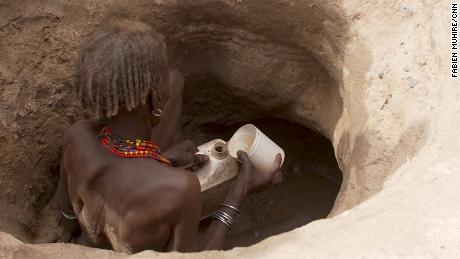This East African nation is known for stability. But drought and rising prices are fuelling insecurity

The pestilence of Covid is still in the dust-choked air, the ground is baked by drought. The murder and misery would seem biblical — if they were not so very modern.They’ve already played out on the other side of the continent where climate change and overgrazing have After one sweep through Marsabit county in June, police captured 200 machine guns, automatic rifles, and other weapons plus about 3,000 rounds of ammunition.Just as in west Africa, Kenya’s problems are being deepened by climate change. Kenya is enduring its worst drought in 40 years, But that may be forced on the central government after the elections, as pastoralists seeking grazing now bring camels to browse on hedges in Isiolo. Seeking pasture, they’ve invaded wildlife parks and sanctuaries, bringing them ever closer to the tourist attractions that are one of Kenya’s biggest export earners.No effort has been made to drive them out but the heavy toll their livestock takes on the landscape means it will struggle to recover in the next rains, if they ever come.Past experience across Africa has shown that drought combined with overgrazing means when rains do fall, they wash away topsoil in vast quantities. Once that happens, there’s little left but desert, after just a few years.”Any time you get people who are hungry and without other options you’ve got a security situation. (In) Northern Kenya we’re bordered by South Sudan, Ethiopia, and Somalia, all of which are still in the grip of conflict that spews small arms into this ecosystem, so you’ve got a lot of weapons up here and increasing hunger so, yeah, I’d say that’s an increasing security concern,” said Frank Pope, CEO of charity Save the Elephants, based in Kenya’s Samburu National Reserve.Pope’s organization also works with elephants in Mali, West Africa, much of which, he now warns, was savannah not long ago but now sustains only “elephant, goats, and insurgents.”The combination of drought, soaring food and fuel prices due to a distant war, a burgeoning population, and civil wars on Kenya’s doorstep is an incendiary mix.And that may be bad news for humanitarian operations in neighboring Somalia, Ethiopia, and South Sudan which depend on Kenya’s ports, and relative calm, as a base of operations and essential location for logistics.And as the effects of climate change take hold in Kenya, as children face malnutrition and their mothers waste away, compounded by the desperate battle for nomads and pastoralists to survive, this once stable region is showing few signs that it can cope alone.




